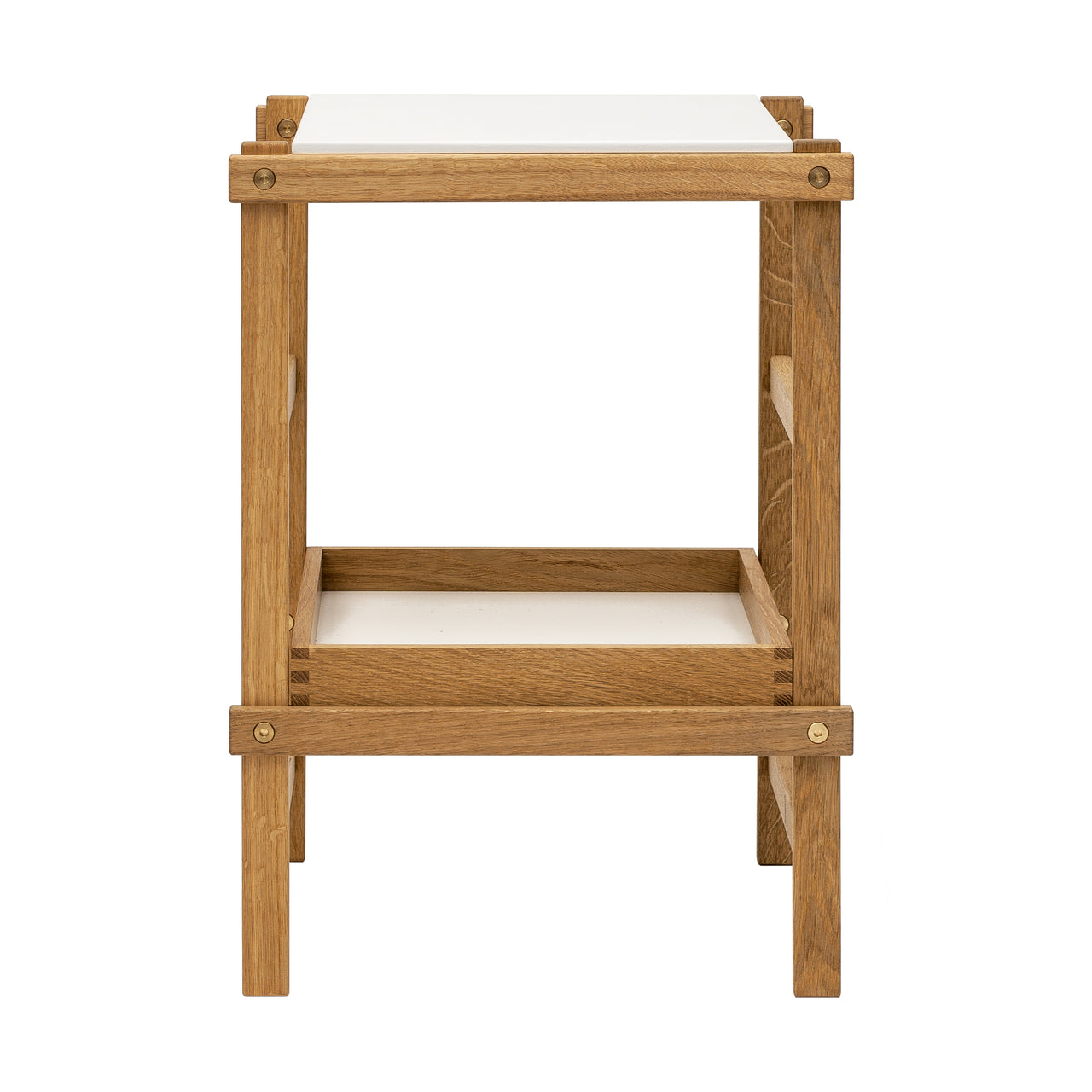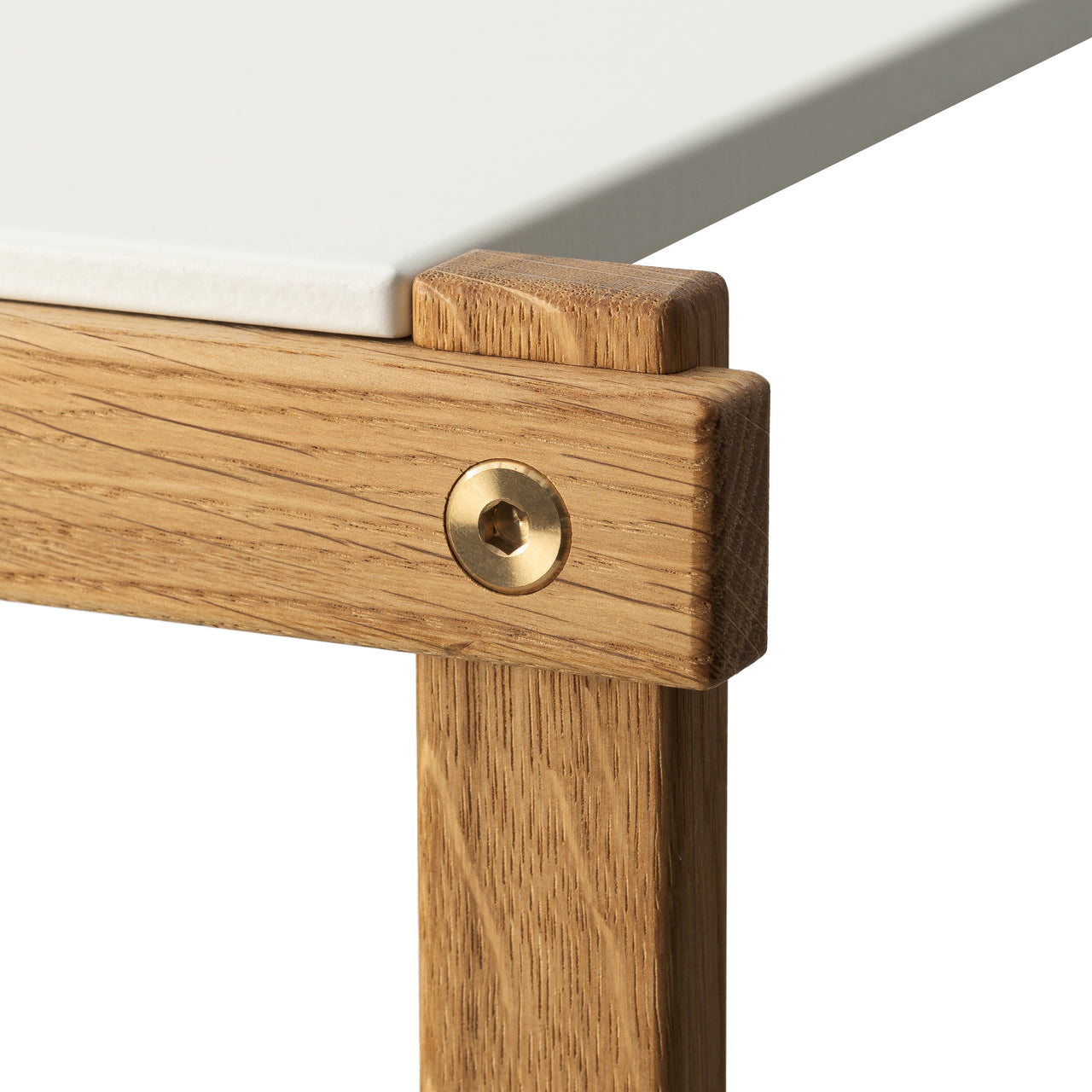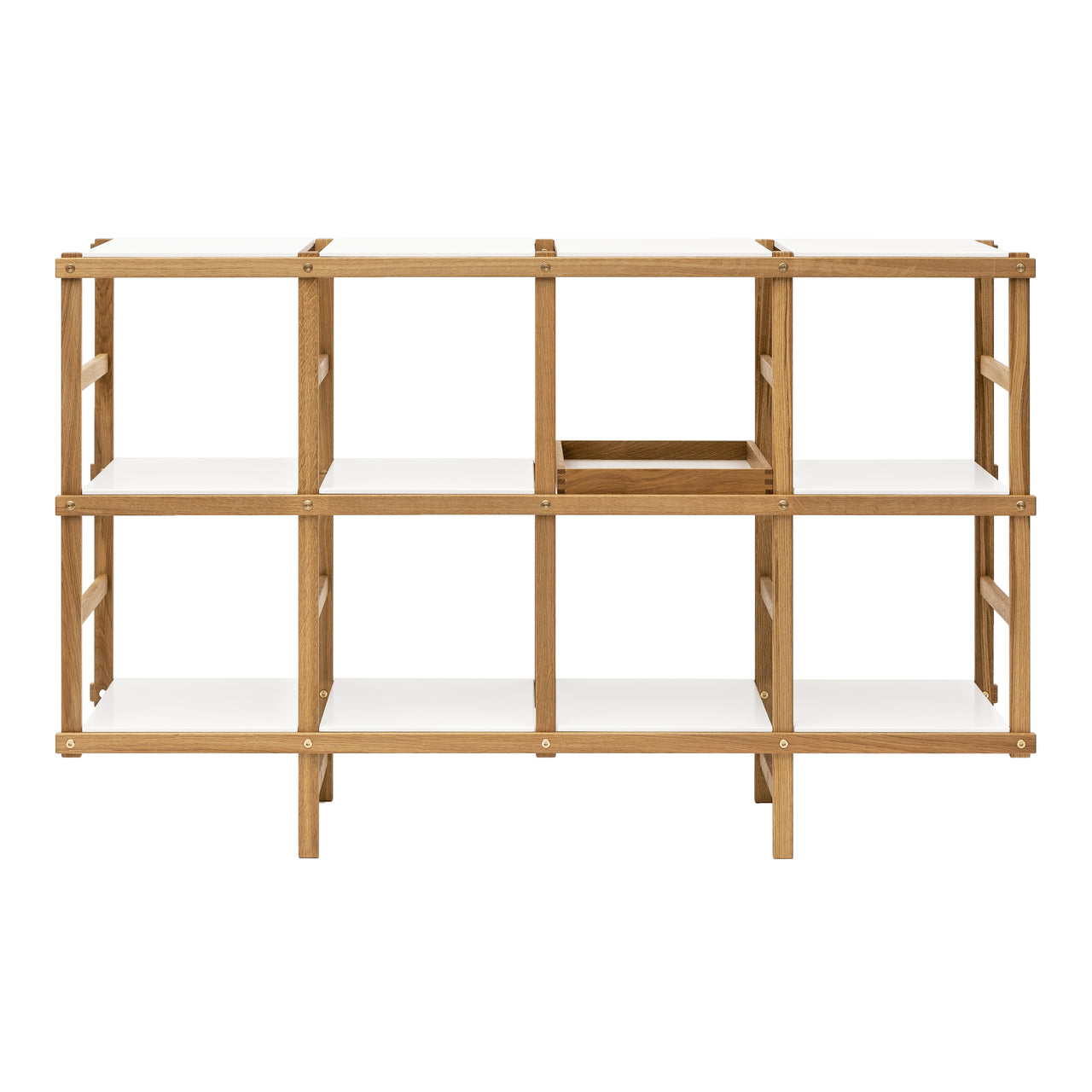

Free Shipping (over 999 kr*)
Left - Photo: Harald Hermanrud. Right - Photo: Pernille Greve Styling: Lone Monna & Designer: Harald Hermanrud
14.04.2025
Each month, we spotlight the creative minds behind Design House Stockholm, offering a glimpse into the ideas and inspiration that shape our brand and collection — from the first spark of imagination to the creation itself.
Designer Harald Hermanrud received the Formland Design Award 2017 and Monocle Magazine’s Best in Class 2019 after having premiered his shelving system Frame in 2016. His light yet sturdy modular shelving system won its popularity as a furniture piece for modern living spaces that could be positioned as a backdrop as well as a centerpiece in itself.
With a degree from the Royal Danish Academy of Fine Arts’ Design School, Harald Hermanrud decided to add studies for cabinetmaker to his curriculum. While approaching design as a problem solver, he combines the principles embedded in Danish design tradition with his own senses for materiality and craftsmanship.
"Shelving systems are often difficult to change, Frame on the contrary is very easy to reconfigure: the design lets one move the shelves around on different levels without any tools. Do create your personal look: frame minor objects or let major ones shoot out through the construction, whatever you fancy."
"By exposing the brass nuts you add a glossy shiny detail that show off the construction in order to see and understand how it is actually made and assembled. I think that honesty make people relate to the design, something I think is very essential and characteristic in my design language. No unnecessary thing, just the works."


What inspired you to become a product designer, and how did you get started in the field?
I have always been creative, hands-on, and a free thinker, so pursuing a career in art, design, and craftsmanship felt natural. I followed my desire to explore my Norwegian roots and moved to Oslo to begin my education at The Oslo School of Architecture and Design. After two years of studying industrial design for my bachelor's degree, I decided to transfer to the Royal Danish Academy of Fine Arts in Copenhagen to immerse myself in furniture design. With a background in industrial, solution-oriented thinking from my studies in Norway and a more intuitive, artistic, and craftsmanship-driven design process from my education in Denmark, my professional foundation is firmly rooted in the Scandinavian design tradition.


How do you balance aesthetics and functionality when designing a product?
In my approach, I focus on solving a problem or meeting functional, material, and production requirements while adding a personal, artistic, and sensory element to the design process. The framework of the design project often defines where the balance point lies, and finding it can vary significantly. However, for me, it is essential to be both academically and logically grounded in my argumentation and intuitive and sensory in my expression of detail, material, and craftsmanship. Not to the extent that it becomes a limiting dogma or stigmatizes the balance I seek, but rather to establish an honesty in the design that most people can read and relate to with both mind and senses.
While balancing aesthetics and functionality involves seeking something new, original, and distinctive, I also strive for familiarity—both logically and emotionally.
I pay close attention to ‘recognizability’ in both aesthetics and functionality, aiming to evoke positive associations, references, and even memories through use and observation.









What are some of the biggest challenges you face during the design process, and how do you overcome them?
It can be paradoxical to seek innovation while maintaining familiarity, which naturally presents challenges in the design process. Beyond balancing aesthetics and functionality, my process also involves creating a more sustainable connection and harmony between materials, construction, and production. It can be challenging not to get distracted by trends but rather to reach the underlying tendencies of a modern lifestyle and changes in our surroundings. This way, I aim to design furniture that is relevant to the present and has the potential for longevity. My designs must have a reason to exist. I strive to achieve this goal by maintaining an academic argument in the design process while allowing artistic and intuitive freedom to deviate from the rules. This is how I seek to create interplay and coherence between innovation and familiarity. Instead of being limited by the paradox, I am drawn to the fascinating quality of contrasts and opposites, as they can highlight each other's strengths and compensate for each other's weaknesses.
Try displaying organic sculptures or wild plants within the cubic design language that characterizes my Frame design – a magical connection and harmony emerge between the contrasts.


Which of your designs are you most proud of, and why?
My design, Frame, holds a special place in both my mind and heart. For me, the design is a constructive statement and a reaction to the times in which it was created. This was not my original intention or goal, but it emerged through contemporary inspirations, my creative process, and academic argumentation.
The Frame shelving system is a versatile platform for showcasing crafts, plants, and literature – the authentic and the tangible that cannot be digitized. The design was born during a time when I observed a growing desire for stability and permanence, with the resurgence of crafts, ceramics, plants, and literature as a reaction to the fleeting digital world, mass production, and urbanization away from nature.
I am proud to have created Frame, which speaks to a constructive lifestyle with healthy, sustainable values — both as a ‘flat-pack’ and ‘assemble-yourself’ product, as well as a platform for displaying crafts, plants, and literature, all crafted from beautiful natural materials that age gracefully.


What role does sustainability play in your design approach, and how do you incorporate eco-friendly practices into your work?
I work with sustainability in function, material selection, and construction. For me, it is natural to seek synergy between these aspects, where joints and connections become focal points that contribute to the overall impression. Whether the aesthetic that emerges is also sustainable by being durable and timeless for the next generations - that is an open question - but I really strive to “do my homework well” and to base my argumentation in the process on the honest and classic rather than the made-up and trendy.


What has the collaboration with Design House Stockholm meant for you as a designer? Has this partnership influenced your creative process and professional growth in any way? Are there any specific memories or experiences from the design process with Design House Stockholm that stand out to you, whether it be a particular project, a moment of inspiration, or a challenge you overcame?
Has this partnership influenced your creative process and professional growth in any way?
Are there any specific memories or experiences from the design process with Design House Stockholm that stand out to you, whether it be a particular project, a moment of inspiration, or a challenge you overcame?
I vividly remember exhibiting Frame at Färgfabriken in Stockholm back in 2015 when Design House Stockholm’s founder, Anders Färdig, stopped by with his wife. I didn’t know who he was at the time, but we had a pleasant conversation. Before leaving, he handed me his business card. When I read it, I couldn’t believe my eyes.